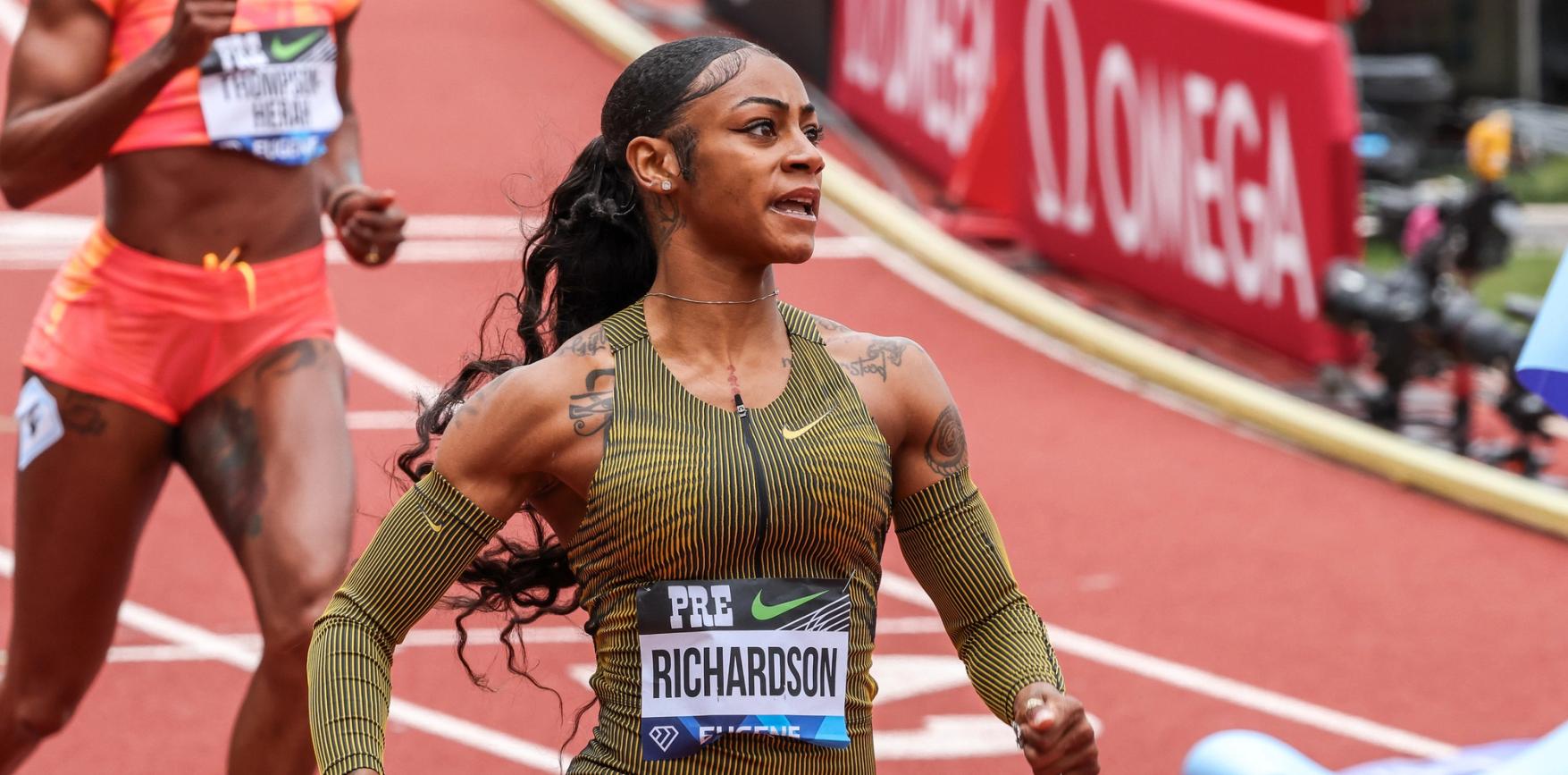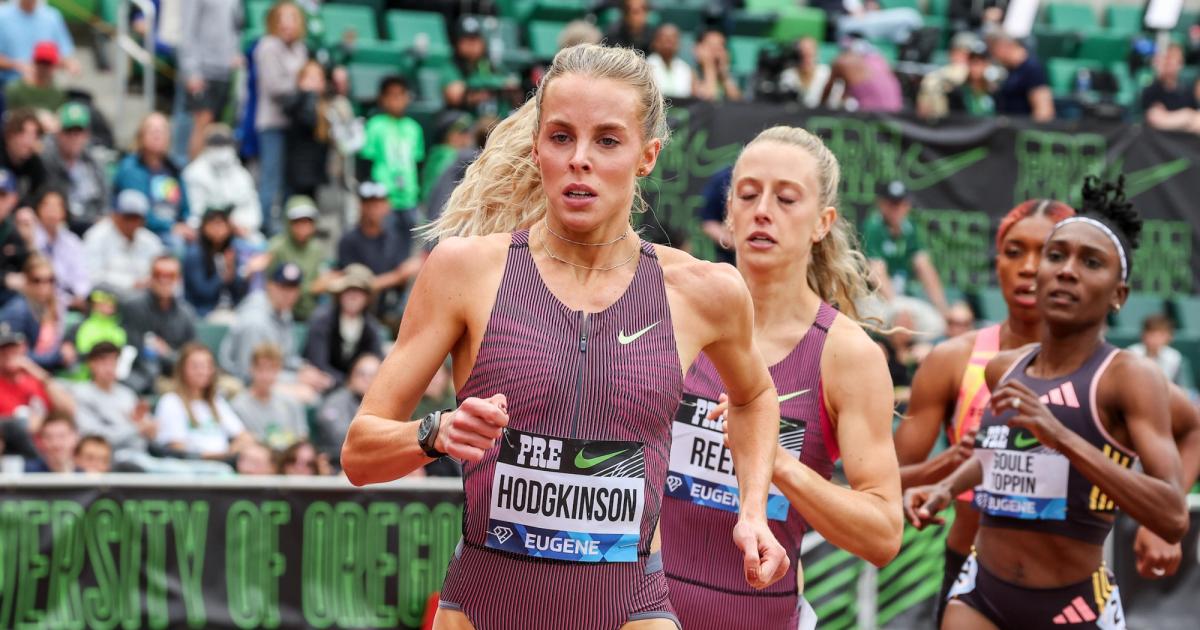By David Melly
June 5, 2024
As of the morning you wake and read this newsletter, there are 57 days until the first day of track and field action at the 2024 Olympics.
That’s eight more seven-day training weeks. Seven more long runs. 19 more hard efforts if you use the Team Boss “hard effort every three days” system. If you’re an American pro, you’ve probably also marked on your calendar that the Olympic Trials are 16 days away. Jamaicans get an extra six days or so, and European competitors are already starting their championship season with action kicking off Friday (We have a full preview!). Track and field doesn’t have a formal “postseason” the way ball sports do, but no matter how you slice and dice it, we’re entering the part of the training cycle where you’ve gotta be sharp and stop saying you haven’t started speedwork.
The last few weeks of pro track and field have started to give us a sense of who’s ready and who’s not. The male 400m hurdles medalists from Tokyo, for example, have each laid down a sub-47 second performance to make it clear where they stand. Noah Lyles tied the second-fastest wind-legal 100m of his career in Jamaica this weekend – although he lost to another medal contender in Oblique Seville. After rocky starts on the Diamond League circuit, Christian Coleman and Sha’Carri Richardson used the Prefontaine Classic to put any doubts to rest about their fitness heading into Trials.
Two days and a few thousand miles apart, reigning Olympic champion Sydney McLaughlin-Levrone and reigning World champion Femke Bol each ran their first 400m hurdles of 2024 in the two fastest times in the world this year– with Sydney clocking a 52.70 (Race video | Post-race interview) and Femke running 53.07. McLaughlin-Levrone and Bol are an interesting case study in how differently two athletes can approach a race schedule and still show up to championships fit: McLaughlin-Levrone races sparingly and rarely abroad, but when she deigns to enter her specialty event, she’s ready to post a world-class time. Bol raced a chock-full indoor season and headed over the Atlantic to the Bahamas to anchor a few Dutch teams at World Relays, before presumably taking some downtime to reset during May. Almost no one as good as Bol races as much as she does: counting heats, she raced 29(!) times in 2023 including 11 rounds of the 400m hurdles.
But on the other end of the “who’s ready and who’s not?” continuum, who should we be worried about at this point? One easy answer is anyone who’s been mysteriously absent on the circuit so far this season, particularly at meets closely associated with their sponsors. Ryan Crouser and Erriyon Knighton haven’t competed since indoors with no clear explanation. Olympic champs Faith Kipyegon and Athing Mu both pulled out of the Pre Classic and have publicly disclosed bumps along the training road, but given how far ahead of their domestic competition they usually are, it’s probably worth withholding judgment. Shelly-Ann Fraser-Pryce hasn’t competed yet in 2024, but since she has 24 global medals on her shelf and has been posting hype videos to Instagram, she’s probably earned the public’s trust that she knows what she’s doing. The glass-half-full view is that they’re saving their legs for when it counts – we sure hope that’s true.
And then there’s the people who have raced… and left some room for improvement. Fred Kerley hasn’t won a race since April 6th and has season’s bests of 10.03 and 20.17 in the 100m and 200m… but he’s confident the best is yet to come. We’ll see what he has in store this weekend at the NYC Grand Prix. Shericka Jackson’s slowest 200m final last year was 22.02, and after three races in 2024, her season’s best is 22.69 – but she has won two of her three Diamond League showings. Double-double Olympic champ Elaine Thompson-Herah finished dead last in the 100m at the Prefontaine Classic and hasn’t raced since, but ETH has only lost one Olympic final in her life (the 4x100m in Rio, where she still picked up a silver).
Now, to be fair, the flip side of the rocky start to the season is obvious: you peak too early and you’re completely burned out come August. And there are a few reasons why these big names are able to race sparingly and selectively: they aren’t nearly as worried as the average pro about busting the rust (they have the experience), making the team (they have the talent), or picking up an appearance fee (they have the money). But now that we enter the “national championship blackout window” in the World Athletics calendar, we’re about to find out who’s spent their spring training smart and who needs every one of those 57 days to have a fighting shot at a medal in Paris.

David Melly
David began contributing to CITIUS in 2018, and quickly cemented himself as an integral part of the team thanks to his quick wit, hot takes, undying love for the sport and willingness to get yelled at online.




